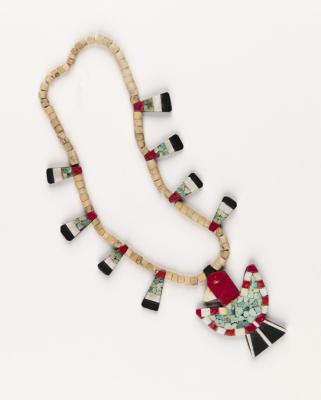Calendar of Events
Here, Now and Always: A Final Look
with Dr. Bruce Bernstein and Lillie Lane
January 26, 2020
2:00 pm through 4:00 pm

Water Girls
Water Girls , 2017, Marla Allison, Laguna Pueblo
Museum Purchase, Museum of Indian Arts and Culture/Laboratory of Anthropology, 60220/13
Photography by Addison Doty
Based on two Edward S. Curtis photographs, this acrylic tryptich superimposes Laguna Pueblo and Hopi designs over Curtis’ images, speaking back to the power dynamics inherent in his legacy, and reclaiming the photograph as her own. The girl on the left was added into the frame by Allison. Speaking about the piece, Allison explains, “[T]hrough their eyes, these women can show you a lifetime of hard living and determination to exist. One looking to the past, one looking at the present, and me, I am looking towards the future. […] This is [the] strength, humility, obedience, tradition, sacrifice, family, duty, and heritage of a people made through the hand of a Pueblo woman.”

Necklace, c. 1930-1940
Santo Domingo Pueblo, Gift of Grace Bowman
Museum of Indian Arts and Culture/Laboratory of Anthropology, 49213/12
Photography by Addison Doty
Commonly known as a “Depression Era” necklace, this mosaic “thunderbird” pendant was made using both natural and artificial materials. During this time period, some materials may have been difficult to come by, so artists worked with repurposed items such as batteries, plastic, and phonograph records to continue their traditions. Portions of this necklace were made with commercial shell disc beads, while the turquoise is likely from the Cerrillos mines. The use of the term “Depression Era” largely neglects the ingenuity of the artists and the beauty of their work.
